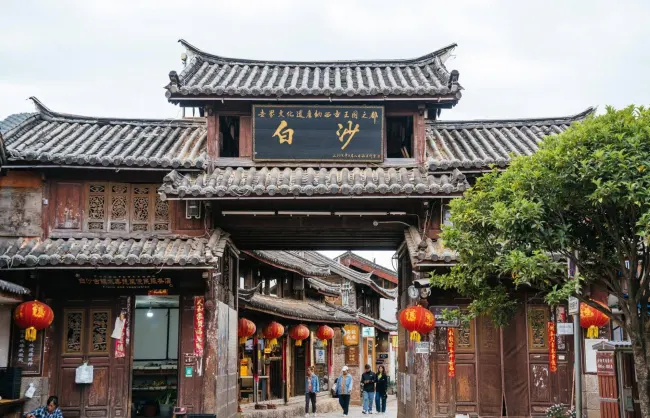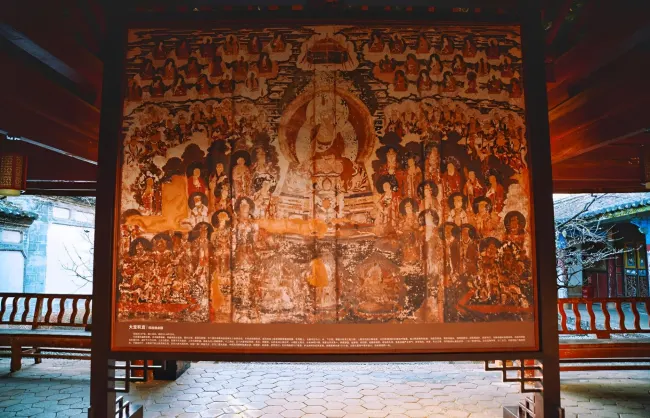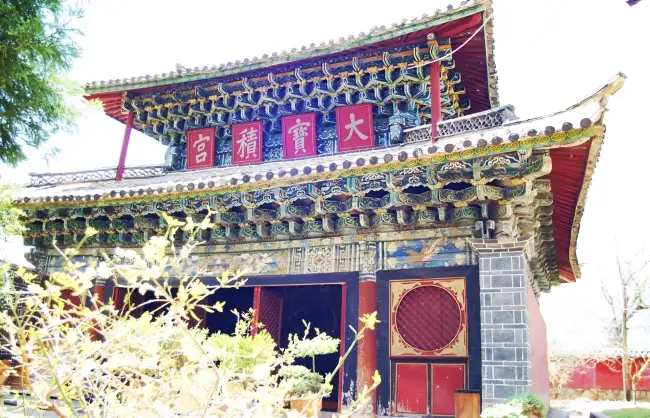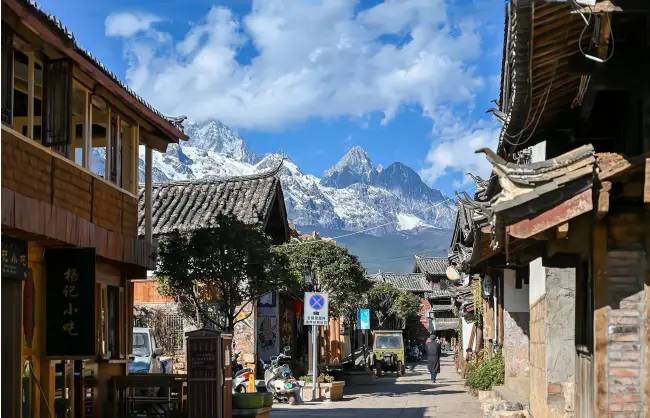Also known as Baisha Old Town, Baisha Village in Lijiang, Yunnan is the birthplace of Naxi culture and one of China’s historic and culturally significant towns. As the origin place of the Mu family, the ruling Tusi clan of Lijiang, this town is the most pristine Naxi village, featuring not only ancient architectural styles but also unique Naxi customs and splendid murals.
Baisha Village Facts
- Location: Baisha Town, Yulong Naxi Autonomous County, Lijiang City; 10 kilometers north of Lijiang Old Town
- Opening time: All day long
- Time needed: Half a day
- Best time to visit: Spring and autumn
- Ticket: Free
- Suited to: History enthusiasts, art or mural lovers, and those interested in Naxi culture

History of Baisha Village
Baisha Village was once the political, economic, commercial, and cultural center of a world-class “Ancient Naxi Kingdom.” It has a long history. As early as the Tang Dynasty, when the Nanzhao King designated Jade Dragon Snow Mountain as the “Northern Mountain,” the ancestors of the Mu family began building Baisha Street and the Beiyue Temple here.
From the Song and Yuan dynasties until the early Ming Dynasty in 1383, the Mu family resided in Baisha Old Town. The town’s commerce and craftsmanship were highly developed, contributing a lot to its position as a center for copper forging, weaving, and embroidery.
What to See and Do in Baisha Village
1. Marvel at Baisha Murals
As one of the ethnic ancient towns in Yunnan, Baisha Village attracts tourists a lot with its famous murals, which have been included in the UNESCO World Cultural Heritage sites and are a must-visit during your travel to Lijiang in Yunnan. Most of the murals were created during the Ming and Qing dynasties, blending the flowing and colorful style of Tibetan Buddhist painting, and are considered treasures of mural art.

2. Visit the Dabaoji Palace
Dabaoji Palace of Baisha Village houses the largest scale of murals in Lijiang, which were created during the Wanli period of the Ming Dynasty. There are 12 murals in total, featuring 167 individual figures. The content is religious, but what is unique is that within the same mural, there are not only figures from Han Buddhism and Daoism but also Lamaism. It is quite rare to find religious murals that combine elements from different sects in this way.

3. Discover Dongba Culture
Baisha Village in Yunnan has a rich Naxi cultural heritage. When visiting there on your Yunnan tours to Lijiang, you can see Naxi women wearing traditional attire, and find craft shops selling exquisite embroidery and hand-painted artworks. Besides, Naxi music and dance are also must-see, such as the “Dongba Dance” and “Lebba Dance,” which are traditional performances during festivals and celebrations.
4. Explore the Naxi Architecture
Baisha Old Town mainly features wooden houses with the distinctive Naxi style of flying eaves and curved corners. In the middle of the eaves, there are tile cats, which are meant to ward off evil spirits. Nowadays, tile cats are recreated in various shapes, some with mouths wide open, and some with sharp teeth. Start to explore Naxi architecture there during your Yunnan Lijiang tours, and you’ll understand the philosophy behind it.
5. Wander through the Village Streets
There are many ancient streets for you to explore, and the most remarkable one is Sifang Street. The Sifang Street in Baisha Old Town was once a bustling trading hub along the Tea Horse Road and is the prototype for Sifang Street in both Shuhe Ancient Town and Lijiang Old Town. Besides, you can take a leisurely walk along the street, explore the workshops for handicrafts, and enjoy specialty foods such as grilled fish, butter tea, and clay pot chicken.
6. Admire Jade Dragon Snow Mountain
Located at the foot of Jade Dragon Snow Mountain, Baisha Village allows you to see the snow-capped peaks, especially when standing on the main street near the paifang. Particularly, on sunny days, the snow mountain range is lined up in clear weather, contrasting with the ancient architecture and blue sky, creating a stunning view.

Best Time to Visit Baisha Village
Baisha Village in China welcomes visitors all year round, and you can appreciate the murals and architecture anytime. But the best time to visit there is in spring and autumn for the mild climate and enchanting landscapes. If you are interested in local customs, visit there during festivals like the Bangbang Festival on January 20th or the Torch Festival on June 24th-26th in the Chinese lunar calendar.
Getting to Baisha Village
Take a flight or train to Lijiang City, and then take Bus No.6 to Baisha Old Town in Lijiang. Or, if you are in Lijiang Old Town, make your way to Lijiang Old City Gate Bus Station and take the tourist shuttle to Baisha Village.
Attractions Nearby Baisha Village
- Lijiang Old Town: Located 10km from Baisha Old Town, this is a UNESCO World Heritage Site that mainly features ancient architecture, winding lanes, and Naxi culture.
- Jade Dragon Snow Mountain: As a vast snowy field of winter and spring, this snow mountain is a paradise for hiking, cable car riding, and skiing. Visiting there, you can explore the vast grasslands, clear lakes, and the beautiful Blue Moon Valley.
Recommended Yunnan Tours with Baisha Village
- 3 Day Lijiang Tour with In-depth Naxi Culture Experience
- 4 Days Lijiang Highlights & Tiger Leaping Gorge Hiking Tour
- 5 Days Yunnan Tour of Lijiang and Shangri-La
- 6-Day Lijiang and Shangri-La Adventure with Club Med Resort
- 6 Days Yunnan Tour to Lijiang, Shangri-La, Kunming
- 7 Days Kunming – Dali – Shangri-La – Lijiang Small Group Tour









